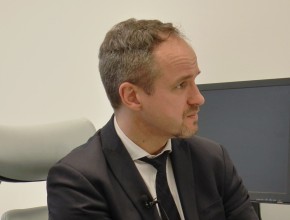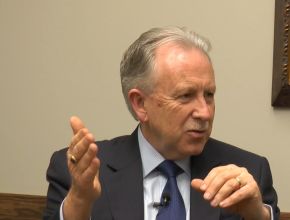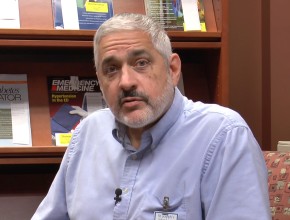Related McMaster Perspective episodes
Schünemann H, Jaeschke R. Breast cancer screening: new guidelines. Part 1: Methodology.References
Recommendations on Breast Cancer Screening. European Commission Initiative on Breast Cancer. http://ecibc.jrc.ec.europa.eu/recommendations/. Accessed July 28, 2017.Roman Jaeschke: Your panels judged all those good things which happened with screening and bad things which may happen with screening, and then mixed them together and came up with recommendations. Could you give us a summary of those? Especially, how do they differ from what we had so far?
Holger Schünemann: Traditionally breast cancer screening recommendations had often focused on age ranges or cutoffs that are easy for us to consider, for instance, women who are aged 30 to 40, 40 to 50, 50 to 60, and so on, but biology does not necessarily go in line with classic counting or mathematics. What we have done in these guidelines is, we have gone a little bit beyond these traditional cutoffs. For instance, we have looked very carefully at the age group of women 40 to 49 years of age, which is a very traditional area, or a complex and often debated age range. We have separated out women in the age group of 40 to 44 and 45 to 49 and provided recommendations separately for these age groups, and that is quite different from what most groups have done in the past.
Roman Jaeschke: Thank you for this explanation about practice guidelines methodology. What are the recommendations of these particular guidelines?
Holger Schünemann: These guidelines have made separate recommendations for different age groups of women. For the age group of women aged 40 to 44, a conditional recommendation against participating or against a national screening program was made. For the age range of 45- to 49-year-old women, a conditional recommendation in favor was made, that is, women should probably participate in a national guidelines screening program.
Roman Jaeschke: Conditional means, “We think so but we are not entirely confident?”
Holger Schünemann: That is probably a correct answer. A few other modifiers or conditions should probably be listed: Is the screening program already available? Is it affordable? Is it feasible to implement? And most importantly, are women willing to accept a certain number of false-positive results and undergo tests that they would not have to undergo in the context of breast cancers that are cured or deaths that are avoided? For women aged 50 to 69, we made a strong recommendation, meaning that essentially all women should participate in a breast cancer screening program. For women aged 70 to 74, we made a conditional recommendation in favor, simply because the health benefits may not be as strongly in favor as they would be for the younger age group, in particular considering the duration of life that follows.
Roman Jaeschke: Is there a number which we could carry in our heads saying – across the ages – performing screening in the population would decrease the incidence of breast cancer deaths by a third, by a quarter, by half? What are we talking about?
Holger Schünemann: Relatively speaking, most screening programs have indicated that the risk of dying from breast cancer is reduced by approximately 20%. So if 10 out of 1000 women would die from breast cancer over a period of 20 years, a 20% relative reduction would mean that it is not 20 out of 1000 women dying from it anymore, but 16.
Roman Jaeschke: Right. So 20 to 16, 10 to 8.
Holger Schünemann: Yes.
Roman Jaeschke: What is the age group with the highest confidence that women are benefiting from the screening program?
Holger Schünemann: The panel offered a strong recommendation for the age group from 50 to 69, and a strong recommendation under those circumstances means that there is very little reason to doubt that breast cancer screening programs in the end on a population level lead to more health benefits than downsides.
Roman Jaeschke: An overall 20% reduction, so at the early age the incidence is not that high, probability of false-negatives is high. Your suggestion is not to offer screening. Starting at age 45, you would suggest to use it, starting at the age of 50, you would recommend using it. And at what age would you end up?
Holger Schünemann: At 69, and for the age group of 70- to 74-year-old women, the panel once again has offered a conditional recommendation, which in part is due to the fact that the risk of dying from breast cancer when you have reached a certain age obviously becomes smaller. There are other conditions, other diseases that may be more important, and there is a question of extrapolation of the findings to age groups beyond that.
Roman Jaeschke: Producing practice guidelines through the European Commission, or whatever other society, is one thing. What are your thoughts about implementation? How strongly to encourage people? What mechanisms do we have? What mechanism should we have to encourage people to use guidelines? Is there any generalizability in it?
Holger Schünemann: There certainly is generalizable thinking about how to use recommendations. Recommendations obviously need to be disseminated but then they also need to be taken up. For instance, with breast cancer screening guidelines, or recommendations, these guidelines were intended for national screening programs and the big benefit of having national screening programs, or screening programs in general, is that there are often already infrastructures in place, or one suggests that an infrastructure is being put into place, so that a population could be covered. In this particular case, the big question is how you reach out to women to actually participate in the breast cancer screening, which is the implementation of these particular recommendations. What the panel is doing, the European Commission is doing, is looking at best ways of ensuring that women do participate and make informed decisions. For instance, is it through letters of invitation to participate in a screening program or is it through other mechanisms, such as recruitment through practices? Is it appropriate to have mobile screening units? These types of questions or these types of interventions, approaches, probably help with implementation. Implementation, as I said, is definitely a key issue with regards to bringing this forward. Other issues around implementation, obviously, have to do with whether or not it is affordable in different settings.
Roman Jaeschke: And it may apply differently to different countries. Thank you very much for this.
 English
English
 Español
Español
 українська
українська




